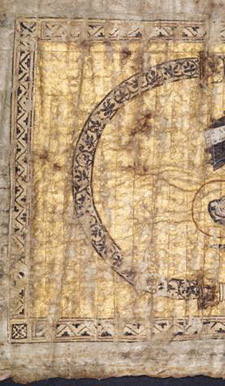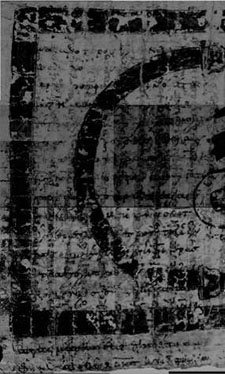X-ray Fluorescence Imaging
There is a well known equation in program management circles that for 20% of the effort one can get 80% of the result, but that one can spend 80% of the effort achieving that final 20% of the result. The imaging procedure that was employed to image the majority of the Archimedes Palimpsest was an extremely effective way of recovering most of the text. However, it was of very little use in reading the text underneath the forged pages, and some areas of text still proved recalcitrant.

Reviel Netz sent in this example on September 29, 2003, circling the area he could not read, and writing “this example is from the Method, middle of 158v. col. 1. Here Archimedes draws some lines to do something, but I am not sure which something it is (I have a guess, but it's just a guess). If I get the letters referring to the diagram describing where the lines go through, and get a couple of words before that, I think I'll be able to settle with great certainty the mathematical action of this proposition.”

A small conference was held n April 1, 2004 to determine how best to retrieve the remaining text from the Palimpsest. There were three main approaches: X-Ray Florescence Imaging, Synchrotron Radiation.
X-ray Fluorescence Imaging
For the April 2004 workshop three different scientists suggested independently that we employ a technique called X-ray Fluorescence Imaging. This technique would involve exciting the Palimpsest with relatively high energy, short wavelength photons (X-rays). Normal X-ray images are taken in transmission: that is, a reactive plate is placed behind a sample, and a negative image of an object is created on the plate. This is what happens when you go to the dentist. However, this transmission technique would not work for the Palimpsest because the image contrast from the traces of ink would be much too small. So they proposed to use a different way to enhance the contrast. Some of the X-rays that do not pass through the leaves excite individual atoms in the palimpsest, which would then generate their own secondary X-rays. The crucial thing about these so called fluorescence X-rays is the fact that different elements generate X-rays with different wavelengths. A fluorescence X-ray sent out from an iron atom is different from an X-ray sent out by a calcium atom, or an atom of gold. These fluorescence X-rays could then be detected with a device that can recognize these different X-rays. The idea is simple: by mapping these X-rays, we could create “element maps” of individual pages of the Palimpsest.The imaging scientists who worked on this aspect of the project were Gene Hall, Professor of Chemistry at Rutgers University, Uwe Bergmann, Staff Scientists at the Stanford Synchrotron Radiation Laboratory, and Bob Morton of the Children of the Middle Waters.
 Gene Hall |
 |
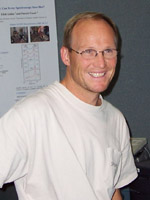 Uwe Bergmann |
 |
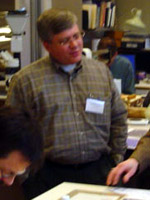 Bob Morton |
Initial experiments were conducted by Gene Hall at Rutgers University, using an X-ray microfluorescence system provided by the EDAX Corporation – an EDAX Eagle Probe – in his lab. He presented his initial results in April 2004.
Following the conference it was decided to do further imaging with an EDAX Eagle probe. The EDAX firm, a subsidiary of Ametek, were extremely generous in providing their facilities in New Jersey for five days of intensive research by Bob Morton and Gene Hall.


Notable Results





Imaging Through the Forgery


This image is of one of the pages in the Archimedes Palimpsest containing a forgery. A small section was imaged, and the resulting iron map produced a section of the Archimedes “Equilibrium of Planes”, which our scholars could decipher.
These images were exciting, but the small section of Archimedes text that we recovered from the forged page took 10 hours to generate! It was clear that we would need more intense X-rays, and for this we needed a more powerful instrument. It was for this reason that we turned to Uwe Bergmann, and to the Stanford Synchrotron Radiation Laboratory (SSRL).
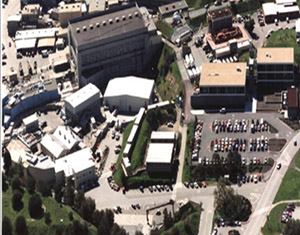 The important point about synchrotron radiation is that it is much more powerful than the radiation that a normal X-ray tube can provide, and it is also much more tunable to the specific wavelengths that we wanted. It therefore had the potential to produce similar results to those of the EDAX Eagle Probe, but much more quickly. The potential danger of using synchrotron radiation is that these high energy X-rays have the potential to damage the parchment. Therefore careful tests were carried out by Gregory Young of the Canadian Conservation Institute, to see how parchment reacted to exposure to X-rays, and we were guided by these results at Stanford.
The important point about synchrotron radiation is that it is much more powerful than the radiation that a normal X-ray tube can provide, and it is also much more tunable to the specific wavelengths that we wanted. It therefore had the potential to produce similar results to those of the EDAX Eagle Probe, but much more quickly. The potential danger of using synchrotron radiation is that these high energy X-rays have the potential to damage the parchment. Therefore careful tests were carried out by Gregory Young of the Canadian Conservation Institute, to see how parchment reacted to exposure to X-rays, and we were guided by these results at Stanford.
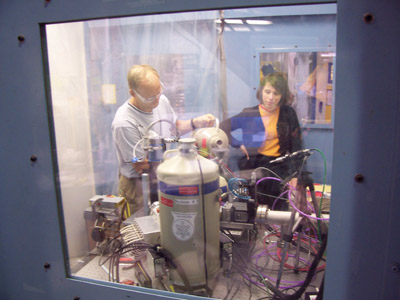
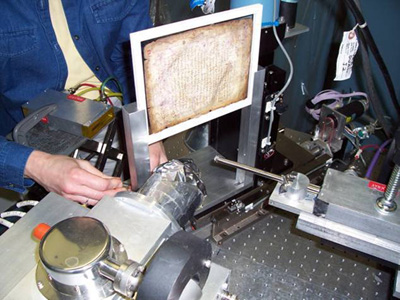
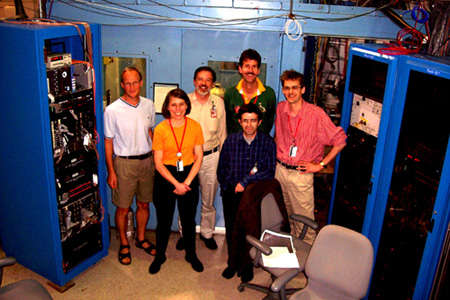
The results can be seen below. We retrieved a whole column of Archimedes text from the same forged page of the Palimpsest in about 24 hours.
